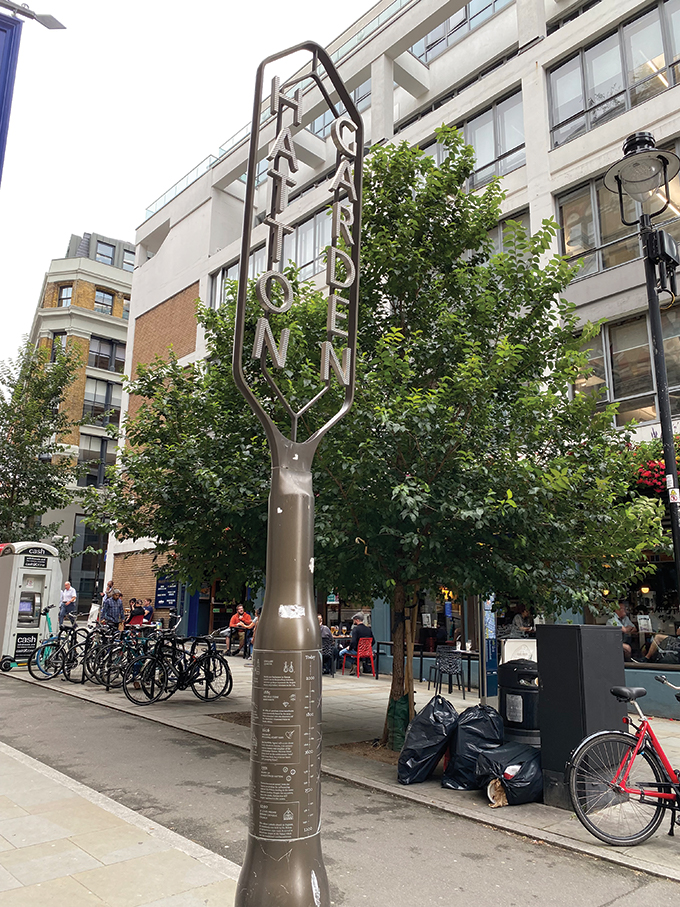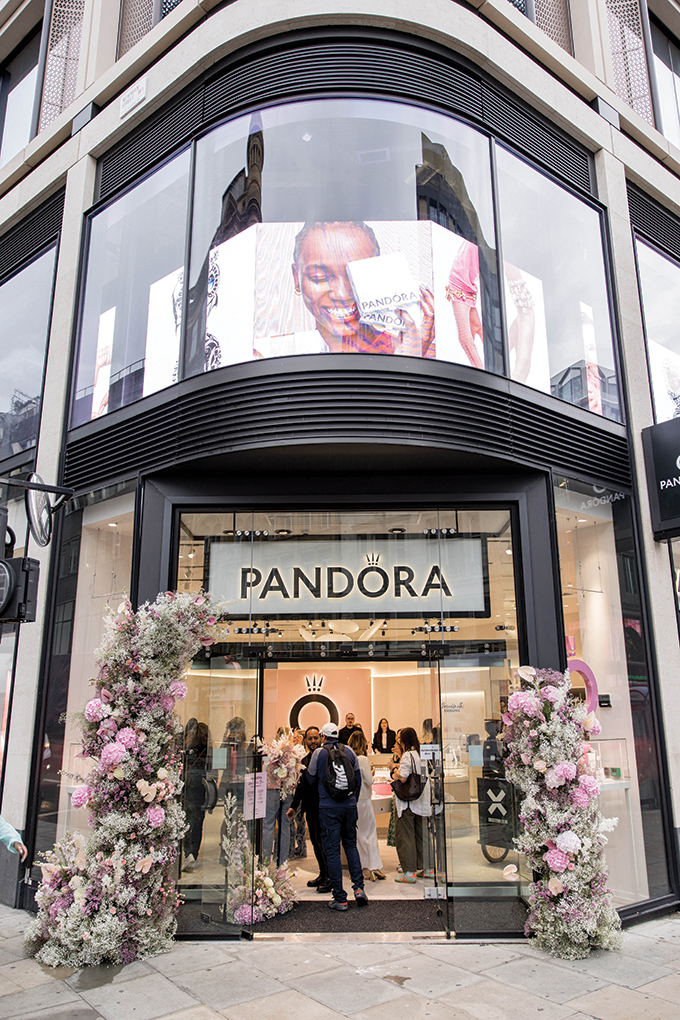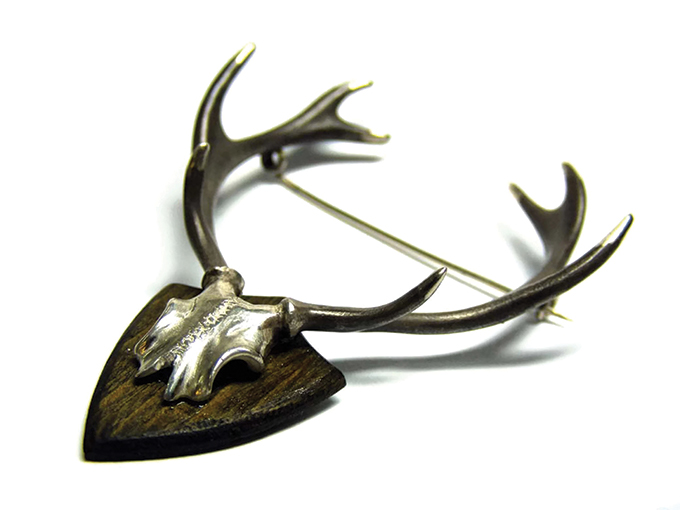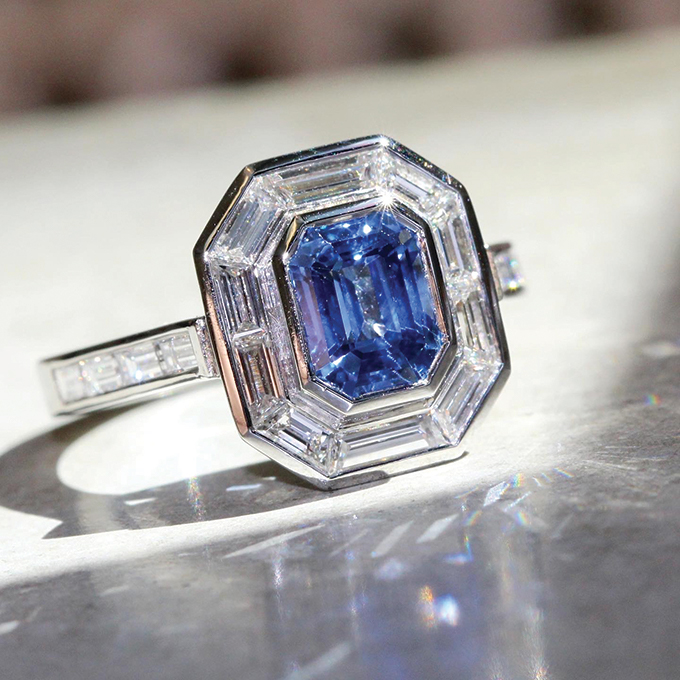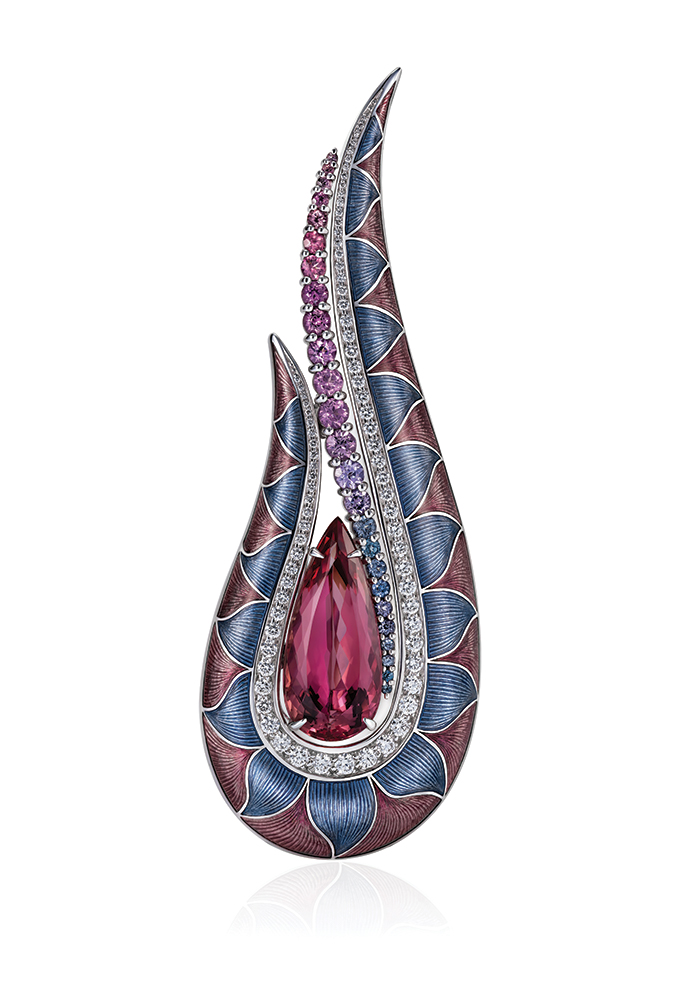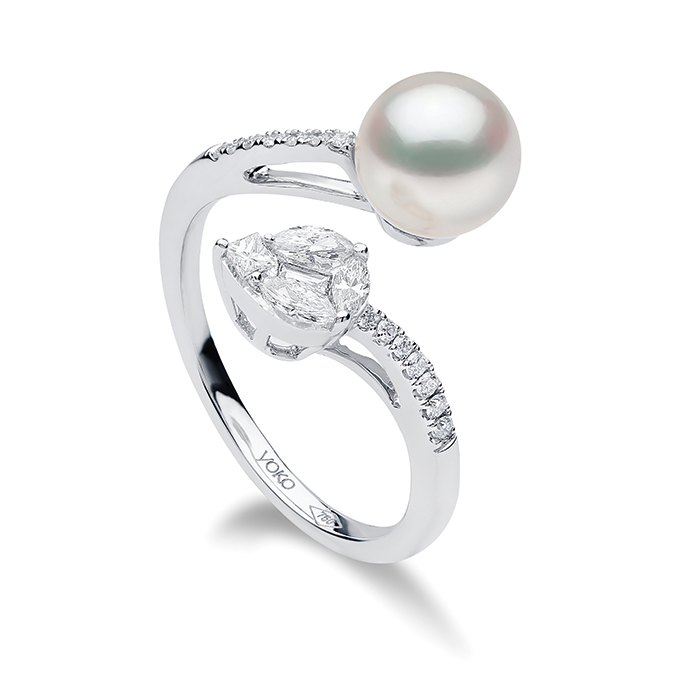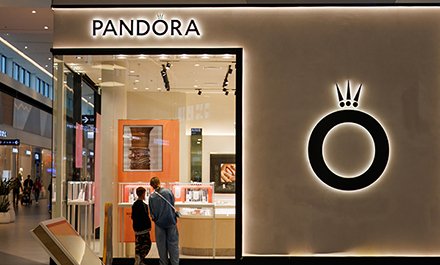Bespoke offerings, personalisation and sustainable narratives inject vibrancy into the UK jewellery market as retailers, designers and brands adjust to market shifts and evolving consumer preferences.
This article first appeared in the JNA January/February 2024 issue.
Despite post-pandemic pressures and current economic and political uncertainties, the jewellery market in the United Kingdom is growing and there is strong vibrancy across all segments. From high street chains and international brands to independents and couture designers, the mood is optimistic as more consumers make jewellery-buying a precious lifestyle experience.
Demand for bespoke jewels, limited editions and personalisation is driving the jewellery scene in the UK, and a lot of exceptionally fine contemporary jewels are being made – albeit sometimes under the radar – that effectively services this growth segment.
The move to bespoke and personalisation is not limited to higher market tiers. High street retailers, even prior to the pandemic, started to transform offerings and presence, mainly in response to international brands opening own stores and reducing or withdrawing offerings through local retailers. Danish brand Pandora, for instance, has expanded to 277 stores in the UK, including a new concept store on London’s Oxford Street, its third store on the country’s busiest shopping street.
Retail shift
To fill the vacuum in brand offerings, retailers shifted to an older value system where bespoke and personalisation were the norm and the family jeweller was an integral part of life, celebration and even emotional wellbeing.
F.Hinds, a family-owned business since 1856 and one of the largest retailers with 116 stores across England and Wales, has taken personalised service to a new level with sections for bespoke design, ear piercings and a successful VIP scheme, Love Hinds.
“With market changes, we evolved into a very flat management structure, keeping senior staff extremely close to the ground and in touch with both high street and online developments,” managing director Paul Hinds commented. “Investing in staff became the most important factor to build loyalty.”
For F.Hinds, high performers are classic styles in precious metals. There is good demand across the board, from silver earrings starting at £4.95 (around US$6.20) to its exceptional range of diamond solitaire rings above £1,000 (around US$1,253).
However, main growth drivers are innovative designs and strong third-party brands that the company constantly embraces. “If the product has appeal, is good quality and offers keen value, then we will show it,” Paul disclosed.
Customised creations
Demand for bespoke is primarily driven by women – particularly those in their 30s to 60s – choosing and buying for themselves as well as bespoke bridal and gift commissions from mature couples celebrating milestones with unique pieces.
London’s Benjamin Hawkins is among the designers riding this wave. “Clients are passionate about these commissions and are willing to wait for their dream piece,” he noted. Some pieces can take up to two years to complete, and price points could vary from £5,000 (around US$6,267) to £350,000 (around US$438,700), Hawkins added.
Clients are quite invested in the design journey and may even bring a mood board to initial meetings, revealed Jennifer Bloy, a goldsmith and designer specialising in hand-rendered designs. A few may request outlandish creations but most want contemporary pieces, preferably gender-fluid that a partner or significant other may wear in a different way.
Designer and master goldsmith Ingo Henn agrees that some couples request bespoke pieces that can be shared and worn differently, perhaps as a pendant for her and as a brooch for him or a piece with a detachable component for the partner. His creations for his brand, Henn of London, feature extraordinary fine gemstones and his signature enameled and hand-engraved patterns created in collaboration with the city’s craftsmen.
Designers agree that strong collaboration among trades – goldsmiths, setters, engravers and enamellers – contributes to the industry’s dynamism and keeps jewellery crafts alive. Among the UK’s rich heritage of industry support is The Goldsmiths’ Company, the Goldsmiths’ Fair and the Goldsmiths’ Centre. These plus a robust apprenticeship system focused on working with masters have enriched the jewellery landscape.
Most of the amazing work is, however, happening under the radar. Jewellery designer Danila Tarcinale, chair of the Institute of Professional Goldsmiths that has a membership of more than 200 that create exceptional bespoke, laments that most creations are not in the public eye. “We want to bring these small independent makers to centre stage and push for them to reach a younger clientele too,” she said.
Sustainable jewels
An important trend in bespoke is remaking family heirlooms, a growth segment for young people too who, in addition to reworking inherited jewellery, buy vintage pieces for rehashing.
This trend seamlessly ties into their ethos of “re-love, recycle and up-cycle,” observed Tarcinale. “Young people are leading the shift to ethical buying and the demand for material provenance.”
Lab-grown diamonds have become a big part of the sustainable story, and many retailers are offering collections. A walk down London’s Hatton Garden, the go-to place for engagement and bridal jewels, reveals a wide presence of lab-grown diamonds.
“Lab-grown is very popular and we offer them because demand is strong,” a salesperson at a large diamond chain store in Hatton Garden said.
Though prices of lab-grown diamonds have been declining, it is still in the fine jewellery category. Even independents selling to high-net-worth customers are opting for lab-grown, especially if the request is for colour, notably yellow and pink stones for high-end jewellery.
Tarcinale said, “Lab-grown diamonds resonate with consumers and offer more possibilities in terms of sizes and shapes for designers to work with.”
Pearls are also an important growth sector, with specialist pearl retailers reporting unprecedented demand.
Yoko London, which recently opened a multi-storey plush store in London, confirmed demand in the capital and across the UK is robust, particularly for modern daily-wear collections with high-quality Akoya and freshwater pearls.
CEO Michael Hakimian said bestsellers are designs that appeal to women of all ages, noting “It is not unusual for daughter, mother and grandmother to shop together.”
Self-purchase is solid while requests for bespoke with larger sizes in unique natural colours are increasing.
Industry downside
A drawback to expanding overall design offer is restrictions on jewellery wear in the workplace, written into employment contracts. This takes a big chunk off demand and tends to keep the overall jewellery offer conservative, observed Tarcinale.
Brexit had a definite negative impact, she continued. A number of goldsmiths and craftspeople moved back to their home cities in Europe while some independents lost high-net-worth clients who left post-Brexit and now find importing jewellery too cumbersome.
Importing and exporting are now more bureaucratic and expensive because of costly carnets and value-added tax (VAT). The latter does get refunded many months later.
Despite these challenges, overall outlook is good and most industry players are optimistic that the UK jewellery market will continue to show substantial growth this year.
Trending in the UK
Metals: White metals are popular. Silver is much favoured and a mainstay of the industry. White gold is in high demand, though yellow gold is showing a recent increase as is rose gold. Gold from a single mine is gaining in popularity as is recycled gold from industry waste.
Gender fluid: Teenagers and Gen Z consumers are demanding and buying gender-fluid jewellery, particularly necklaces in silver or with pearls.
Men’s jewellery: Witnessing robust growth, this category is defined by strong masculine designs with black diamonds, jet and oxidised metals. More men are also buying and wearing pearls. Yoko London confirms that over the past two years, there has been a surge in sales to men, notably of classic freshwater strands as well as bolder strands with large pearls in various colours and baroque shapes.
Ear curation and piercing parties: The market is tapping into the huge growth potential of this segment, with many retailers setting up secluded spaces that are equipped with very sophisticated piercing systems and hosting parties. Women and girls view these events as boundary-pushing change since, less than two decades ago, pierced earrings were considered “unladylike,” and clip-ons were the norm. Piercings are now extremely popular, too.
Permanent jewellery: The new buzz, this involves having the ends of a piece laser-welded around the wrist, neck, fingers or ankles as permanent body jewels.
Online sales: E-commerce is rapidly increasing, and more jewellers continue to sell online post-pandemic.
Sales to visitors: Non-residents are a good growth segment, particularly in areas frequented by tourists. Shops and brands on London’s New Bond Street reported vibrant business while luxury department stores such as Harrods and Selfridges are expanding their designer jewellery offerings to capitalise on the huge influx of visitors.




